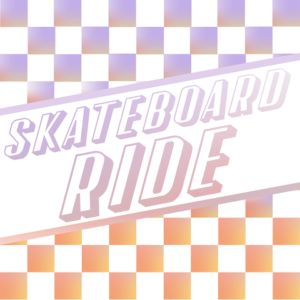Skateboarding is an exciting activity that challenges your physical and mental abilities. If you’re interested in learning to skate but aren’t sure where to begin, we have some tips for you. With a little practice and persistence, you can learn how to stand on a skateboard in a short time. Skateboarding may seem challenging at first, but once you master the basics, you’ll be shredding like a pro! Stand-up skating requires balance, coordination, and strength. Once you learn the basics and build up your skills (and confidence), you’ll be able to practice and hone your skills anywhere – from busy streets to abandoned alleys. In this article, we are going to help you with some useful steps and tips that will allow you to learn how to stand on a skateboard.
Step 1: Find a place to practice

Before you even get on your skateboard, find a place to practice that’s both safe and accessible. For the first thing, you need to look for an open area with no obstacles, such as cars and skaters. A great place to learn skateboarding is the local skate parks. These places offer instruction for beginners and experienced skaters alike. They often provide ramps and other obstacles for practice. If you don’t have any nearby parks, you can try to practice during times when the streets are less busy. Also, you can find a lot of open parking or empty alley there can be practiced easily. Finally, make sure that you’re wearing proper protective gear(like a helmet, gloves, shoes, and knee pads) before getting started. It will make it easier to stay out of harm and prevent potential injuries.
Step 2: Get comfortable with standing on your board
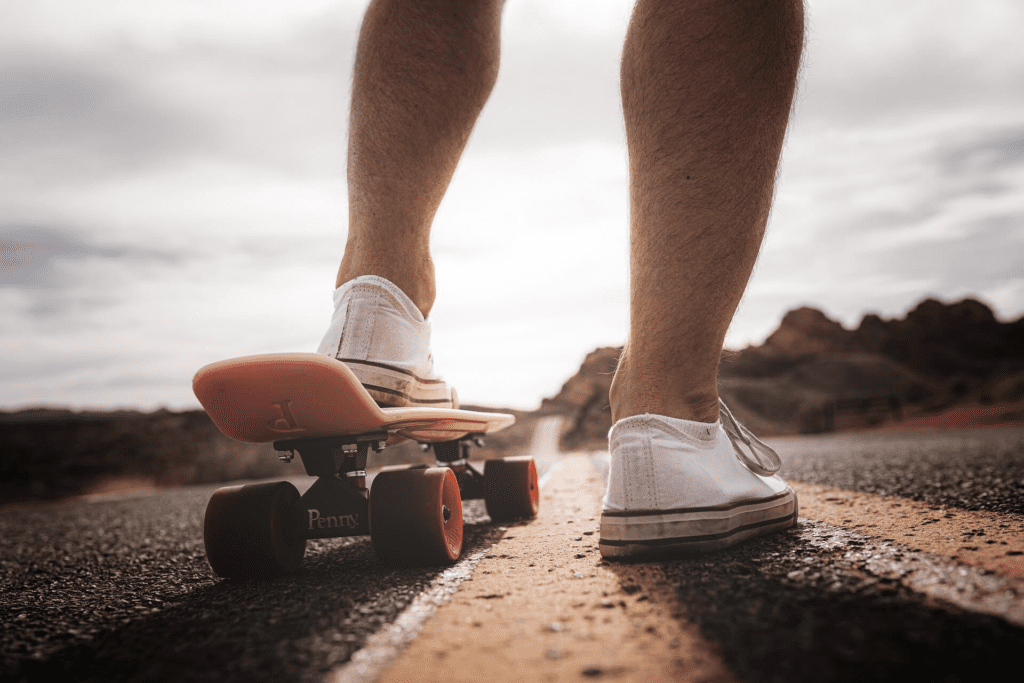
To Stand on a skateboard requires a lot of balance and coordination. To achieve this, you must know how to place your foot on the skateboard. If you’re a beginner, we would suggest going with a longboard because it’s much easier to balance than a short skateboard. Once standing on your skateboard, try to stay as relaxed as possible.
When first starting, You should keep your feet shoulder-width apart. Your legs should be straight, and your knees should be bent. Ensure that your body weight is evenly balanced. Then try putting one foot on your skateboard and letting the other dangle. As you do this, put your hands down towards the ground and push off with your legs. It will help you stay balanced when you start out.
If you feel like you are falling, try adjusting your stance. There are two common stances used in skateboarding: regular and goofy. A regular stance means standing upright with feet together. A goofy stance means leaning forward with one foot behind the other. The goofy stance is a common way to start learning how to do tricks. It’s basically when your left foot turns outwards and your right foot inwards. This method allows for more stability while doing tricks since there is less risk of falling over.
Step 3: Lean with your body, not just your feet
One critical concept you’ll need to understand before you start moving is the idea of learning. Leaning is when you shift your weight in one direction or another. You’ll want to lean slightly with your body when you’re skateboarding.
One way to determine how much weight to place on each foot is to consider where you’re standing on a board. Don’t lean too far forward or backward; just keep yourself balanced. Also, try to put equal pressure on both feet. The more pressure you apply to the ground, the faster you move. You’ll also have to practice balancing and leaning on your legs to control your skateboard better.
Step 4: Balance and shift your weight accordingly
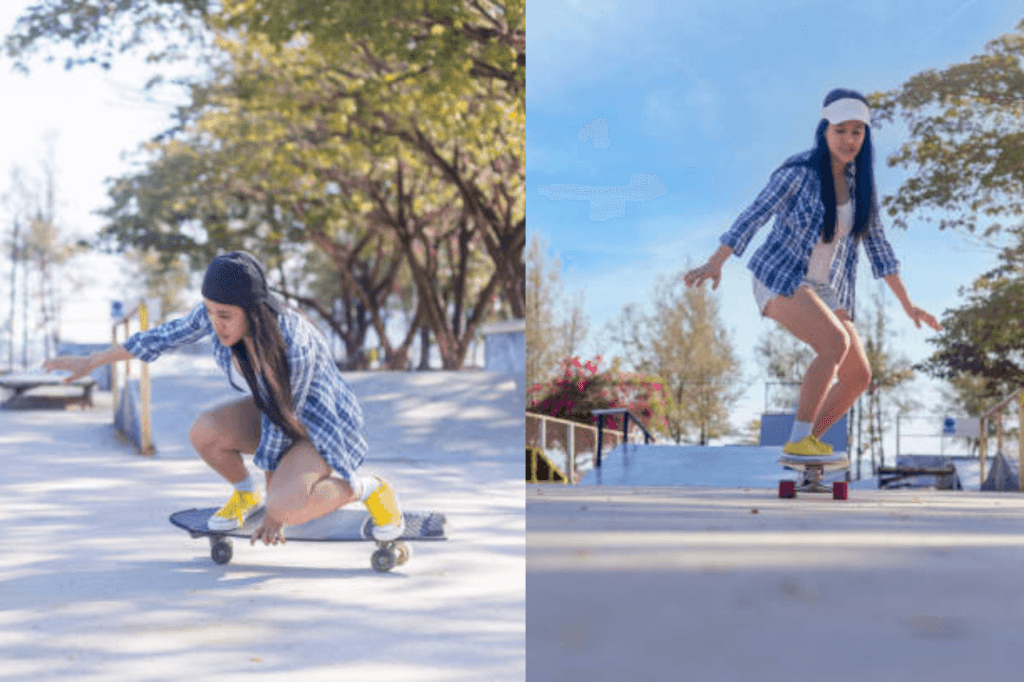
As you start to skate, you’ll want to always have one foot (the foot that’s not on the skateboard) on the ground. That always helps you maintain your balance and control. If your skateboard starts to tip towards one side, you’ll want to shift your weight back on the other foot, so you don’t fall over. The most important thing to remember is that you can’t entirely rely on your board to stay upright. You’ll need to engage your muscles and keep your posture straight and upright. If you’re slouching and leaning to one side, you’ll put a lot of unnecessary strain on your body and increase the odds of falling.
Step 5: Start moving!
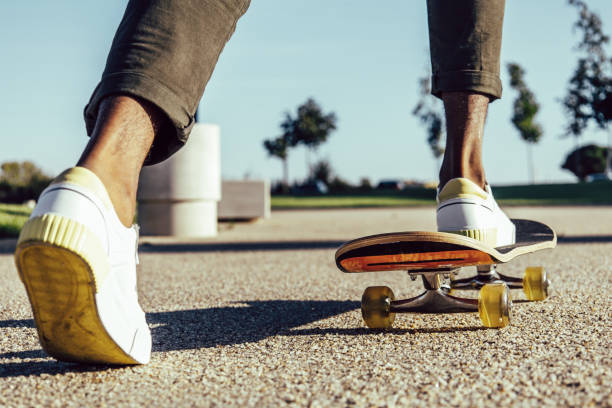
Once you’re comfortable with standing on your skateboard, try to start moving. The best way to do this is to push off with your back foot. Because pushing with the back foot is more accessible and also closest to the ground. We recommend not pushing off your left foot so you won’t fall over. Once you start moving, try to keep your board as flat as possible. When you are moving forward, don’t push yourself too hard. If you’re going too fast, you might fall over. Instead, use your legs to push off the ground rather than using your arms to push up.
Step 6: Try some flips and turns
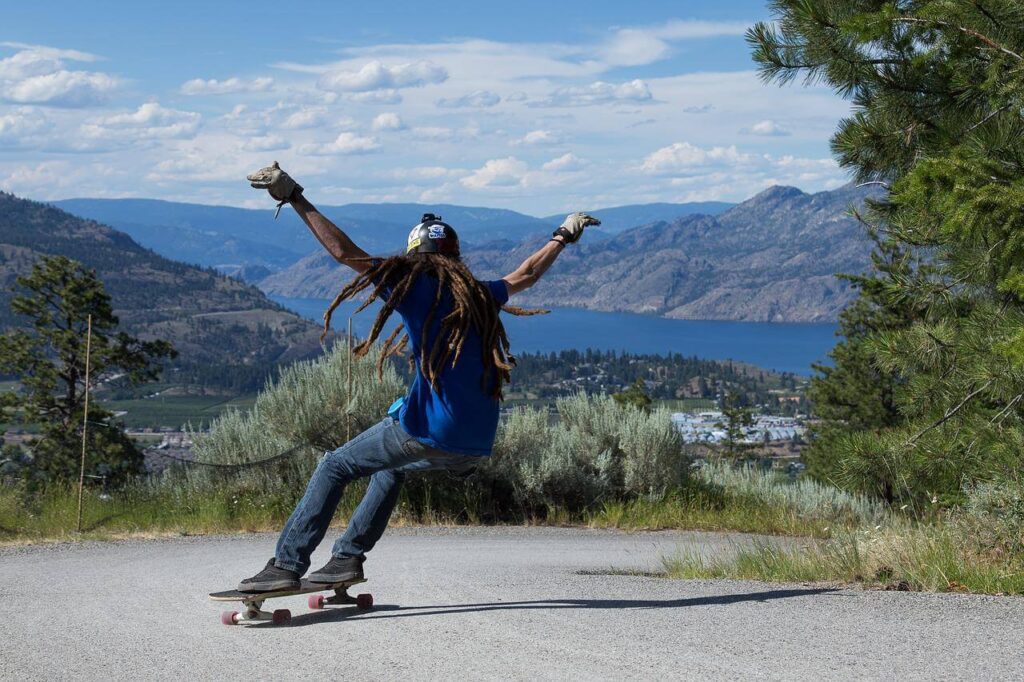
If you’re comfortable skating around and ready to take things to the next level, you can try a few flips and turns. Before you try this, ensure you’re in an open, safe space where you don’t have to worry about hurting yourself or others. Flips are the most advanced and hard-core of skateboard tricks. You can try a front or backflip. To do a front flip, start by pumping your arms and bending your knees. As you come up with your knees bent, bring your arms towards your chest.
When you’re almost as high as you can go, extend your legs and jump up slightly. As you reach the highest point of your jump, bring your legs and arms away from your body and around towards the back of your skateboard. Then enjoy your riding.
To know more about How to Stop a Skateboard easily, you can read this article.
Tips for stability
- If you’re new to skateboarding, or if you’ve been skating for a while but find yourself struggling to stay stable, here are a few tips to help you get started.
- Practice in the beginner park. Skating in a small, controlled environment will help you learn how to balance and control your board.
- Use your feet and legs to steer your board. Keeping your feet stationary and using your legs to guide the board will help you stay balanced and in control.
- Remain aware of your surroundings at all times. If something unexpected happens – like a bump in the road – be prepared to react quickly by adjusting your position on the board.
- Be patient with yourself. It takes time and practice to learn how to stay stable on a skateboard, so don’t get discouraged if it takes some trial and error before you start feeling confident on the board.
Tips for speed
In order to maximize your skating speed, it is important to practice regularly and have a good routine down. Here are some tips for improving your skating speed:
- Practice on the same surface at the same time of day.
- Do laps around the same area, gradually adding more distance each time.
- Visualize where you want to go and focus on getting there as quickly as possible.
- Keep a low center of gravity and keep your feet moving independently of each other.
- Avoid using momentum to power yourself forward; use your muscles instead!
Conclusion
Skateboarding is all about having fun, staying fit, and meeting new friends. Hopefully, through our guide, you now know how to stand on a skateboard better than ever before. Now you just need to find a good spot to practice your skills. Remember, safety always comes first!
Have fun skating!!
Recent Posts
Longboarding is an activity enjoyed by people of all ages. Whether you’re a beginner or a professional, it’s important to select the right longboard for your level of experience and riding style....
There's a lot of traffic at the airport, so skateboarding is a bit unusual. But if you think about it, airports make for perfect skateboarding terrain (oh....those smooooooth buttery concrete...
